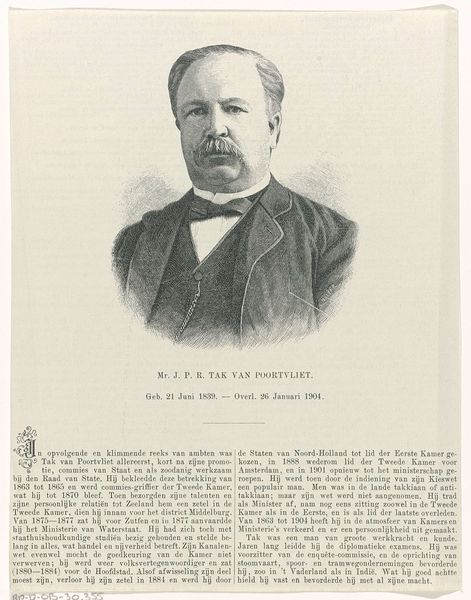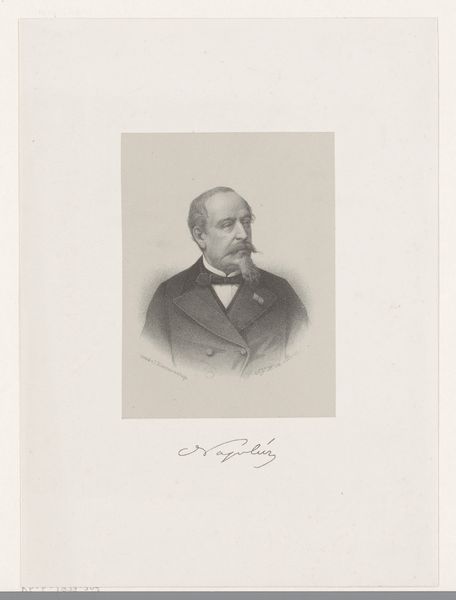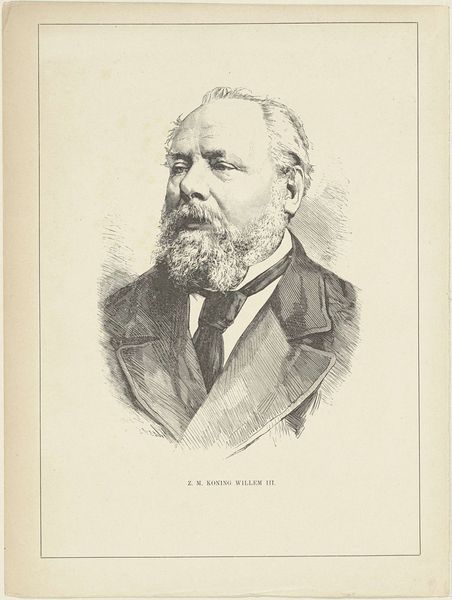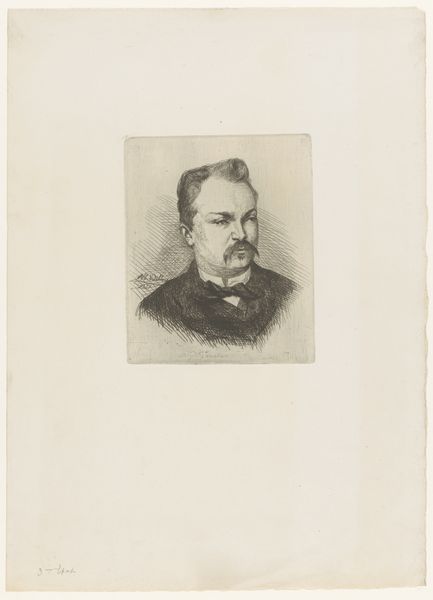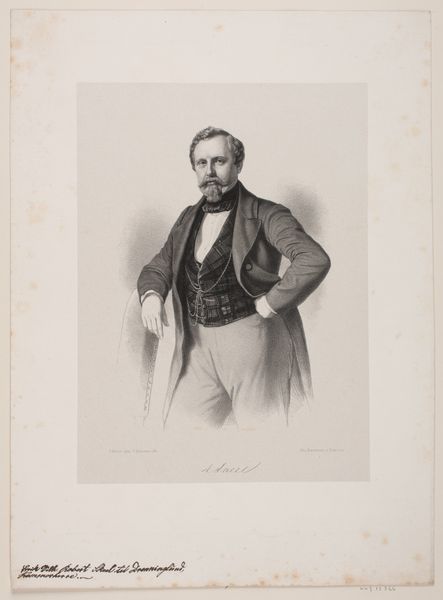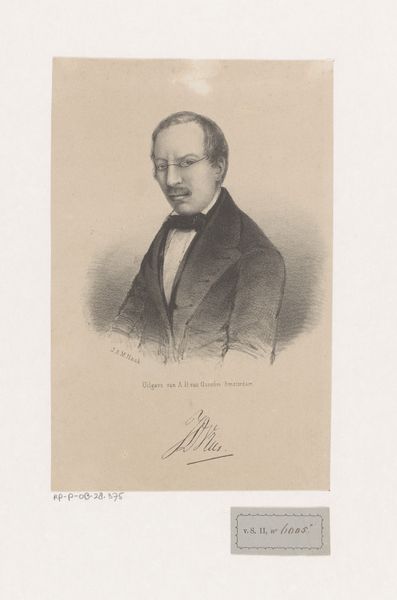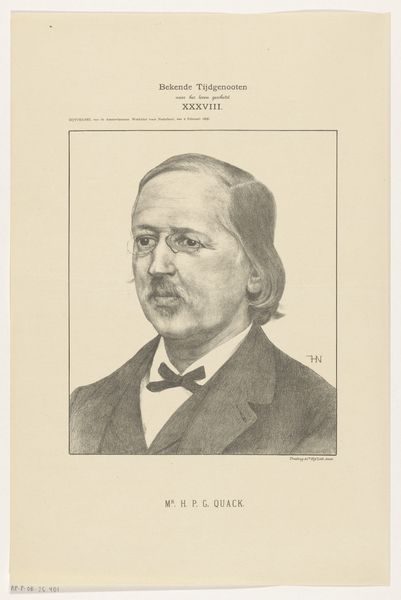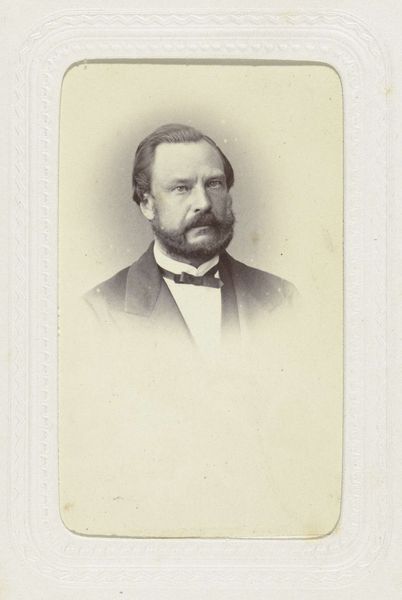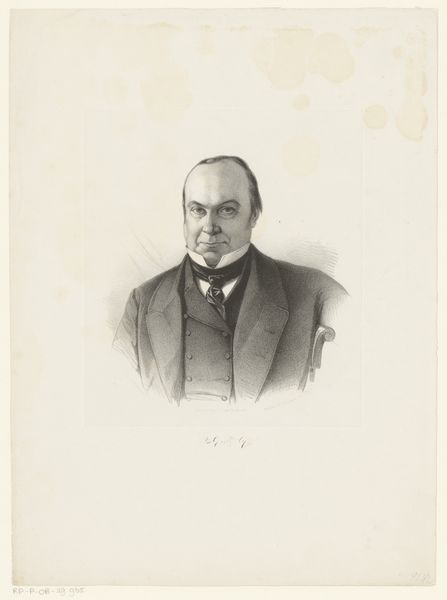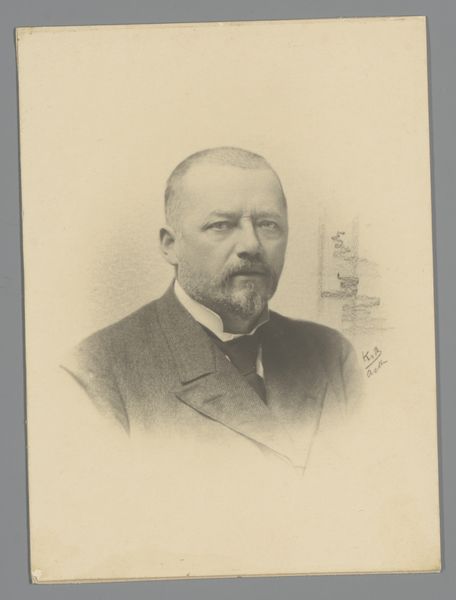
print, engraving
#
portrait
# print
#
academic-art
#
engraving
#
monochrome
Dimensions: height 432 mm, width 293 mm
Copyright: Rijks Museum: Open Domain
Editor: This is a print from 1892, "Portret van Johannes Pieter Roetert Tak van Poortvliet" by Jan Veth, housed here at the Rijksmuseum. It's a monochromatic engraving, and honestly, I find it a little intimidating. The man's gaze is very direct. What do you see in this portrait? Curator: I see the embodiment of power and privilege. The formal attire, the deliberate pose, the very medium of engraving – it all speaks to the sitter's position in late 19th-century Dutch society. But it also raises questions about who gets represented and whose stories are told in art. Who was Johannes Pieter Roetert Tak van Poortvliet, and what systems of power did he uphold? Editor: I believe he was a Dutch politician. So, in a way, this image is perpetuating that power by immortalizing him. Curator: Exactly. Consider the academic art style, too. It reinforces traditional notions of beauty and status, effectively silencing alternative narratives. Think about the artists who weren't given such opportunities – women, people of color, those from marginalized communities. How might their portraits have differed? How might they have challenged this kind of stoic, upper-class representation? Editor: It's making me rethink the entire genre of portraiture. It's not just about capturing a likeness, but about power dynamics. Curator: Precisely. And that makes us consider who holds the power today and whose stories are still absent from the mainstream. Art can be a mirror reflecting society’s values, and also a tool for challenging those same values. Editor: I never considered it that way. Thanks, this was illuminating.
Comments
No comments
Be the first to comment and join the conversation on the ultimate creative platform.
